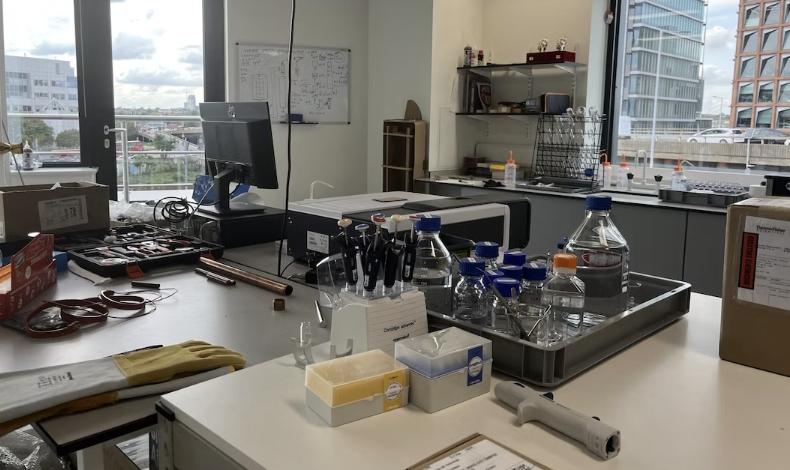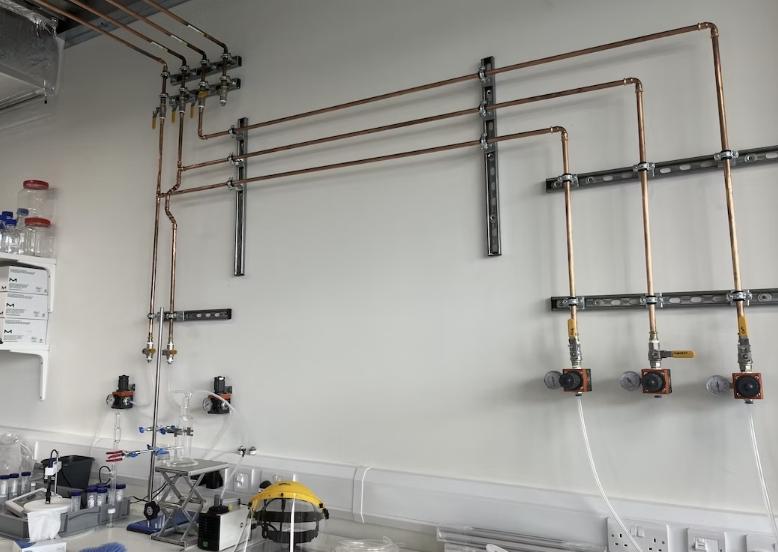In a hidden corner of West London, behind a building site, the Airhive startup is one of many that have secured a space amidst the scarcity of specialized lab environments. In Europe, a burgeoning real estate crisis is unfolding, characterized by the scarcity, high cost, and low specificity of lab spaces. The Airhive team is amidst copper gas lines, test tubes, bolts, and the alarming presence of a biohazard kit, working tirelessly to advance their innovations in the cramped quarters of their rented space.
The Fight for Square Footage
The demand for lab spaces is surging, fuelled by an upsurge of science-based startups across Europe. JLL, a renowned real estate company, unveils plans for 73 new “life science clusters” in the UK alone, indicative of the intensified need for these specialized environments. Yet, the narrative among founders and investors is a unified one – the pursuit and affordability of suitable lab spaces are formidable barriers to Europe’s scientific progression.

London’s Canary Wharf illustrates the crisis vividly. It’s set to host Europe’s largest lab space, yet won’t open its doors until 2026. James Sheppard of Kadans narrates the allure of the London Innovation Centre, where flexibility and adaptability in rental options draw early-stage startups into its embrace.
“Most of those who have expressed interest in the Innovation Centre have been early-stage startups,” Sheppard notes.
However, even as these spaces emerge, the equilibrium between demand and supply remains elusive.
Lab Space FOMO
The rarity of available spaces triggers a panic among founders. Airhive’s co-founder, Rory Brown, reveals the pressing decision to secure a lab at almost £9k a month was driven by the fear of being “locked out of lab space opportunity.” In these premium spaces, the culture of subletting and sharing is not just common but often a necessity. The scale and timing of accessing larger spaces are contingent on luck, synchronicity, and availability.
France’s narrative echoes the UK’s. Fanny Jaulin of Orakl delineates the complex landscape of securing wet lab spaces in France. The scarcity is palpable, and the geographic concentration of these labs adds layers of complexity to the crisis. As startups evolve, the rigid structure and limited scalability of existing lab spaces become glaring challenges.
Priced Out of Scaling

In 2023, a financial downturn hits Europe’s biotech sphere, marking a 28% reduction in raised funds compared to the previous year. This financial hiccup, coupled with the escalating demand for lab spaces, amplifies the crisis. Seb Denby proposes a potential alleviation – the conversion of existing office blocks into lab spaces. Yet, this is a partial solution, limited in its capacity to host high-tech, specialized scientific operations.
The dialogue between demand and supply is intricate. While the need for specialized lab environments intensifies, the real estate sector is caught in a tug of war between profitability and accommodating the burgeoning needs of Europe’s scientific startups. Brown’s narrative of Airhive’s journey from a garage to a premium lab space epitomizes the journey of many – a trajectory marked by constraints, adaptability, and the perpetual quest for more room to innovate.
What’s Next?
The dichotomy between the burgeoning demand for lab spaces and the real estate sector’s return on investment underscores a complex, unfolding narrative. The prospect of inflated prices looms large, potentially exacerbating the accessibility crisis.
Europe stands at a pivotal juncture, where the resolution of this real estate impasse is intrinsic to retaining and nurturing its scientific innovations. The Canary Wharf development, as Sheppard hopes, might not be the panacea, but it embodies a pivotal step – offering European startups “an option to stay,” nurturing the continent’s scientific innovations and ensuring that the next chapter of global scientific breakthroughs has European signatures etched indelibly upon its pages.



